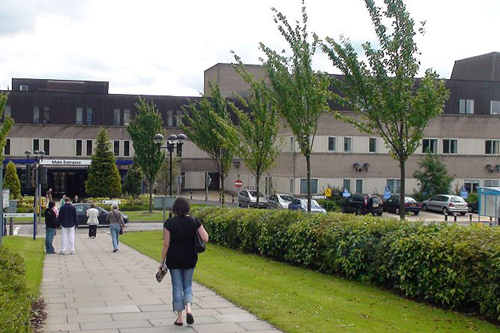In a first in Scotland, a team of leading NHS Lothian specialists based at The Wallace Burns Unit at St John’s Hospital, Livingston are using a pioneering new treatment called NexoBrid to help burns patients.
The treatment involves the use of a tissue dissolving enzyme made from the pineapple plant that helps to remove burnt tissue, to leave just healthy tissue behind.
In 2019, 8,245 adults in Scotland were seriously burnt or scalded, with the top causes for burns being kettle spills, hot fluids, fat or other chemicals.

The Wallace Burns Unit typically cares for patients with deeper burns that may require general anaesthetic procedures.
Skin grafts are common, where the burnt or dead skin is cut away and a skin graft is taken from another part of the body to allow the area to be reconstructed.
While skin grafts are a successful and long-established treatment option, the healing times can be long, delaying a return to normal life for many patients.
This new treatment is already making a significant difference for burns patients within the unit, such as Lee- Anne Jones. Lee-Anne ended up in hospital, after a summer barbeque went wrong. She explained,
“The weather was nice, and I had taken a barbeque to the beach. After enjoying the food, I moved the disposable barbeque out of the way, and in the process stepped on the sand where it had been sitting, seriously burning my foot.”
After assessing Lee-Anne’s injuries, Consultant Burn, Plastic and Reconstructive Surgeon Mr Hilal Bahia recommended the NexoBrid treatment.
He explained, “This treatment harnesses the amazing power of plants to help treat burns patients.
“It uses an enzyme called bromelain, which is derived from the pineapple plant, to dissolve burnt tissue without harming any of the surrounding viable tissue.
“In many patients, the wounds that are left behind are minimised, therefore reducing the need for surgical interventions such as skin grafts.”
The treatment itself lasts around four hours, and involves the application of a special paste and powder directly to the burn and immediate surrounding area.
Mr Bahia added, “We are very fortunate in the unit to work so closely with the NHS Lothian Pain Management Team, who are able to set up patient controlled analgesia which can be used throughout this treatment.
“If you have ever burnt yourself, even only in a minor way, you will know how painful it can be.
“Imagine if your burn was over a larger surface area, or was more severe. While the treatment itself shouldn’t cause patients any pain, the process of applying it, and moving the area can be uncomfortable.
“Through the adoption of patient controlled analgesia, the patient is in the driving seat, and is able to administer pain relief as they require.
“We have found this to be a real positive, both for minimising associated pain, but also for patient comfort and satisfaction, all while reducing the need for sedation.”
Lee-Anne explained that what could have been a significant hospital stay and even longer recovery journey was significantly reduced, thanks to the use of this pioneering new treatment.
She said, “I was in St. John’s for just under two weeks. I left on crutches, but within a few days I was able to stop using them.
“After two weeks I was able to drive, which was amazing and around three to four weeks later I was able to return to work.
“I have nothing but positive things to say about my experience and I am really grateful to have received this new treatment.
“My care from the hospital was exceptional. I dread to think how long I would have been out of ‘action’ if I had to have several skin grafts! My healing was quick, and my foot is almost brand new, all thanks to the power of the pineapple plant!”

